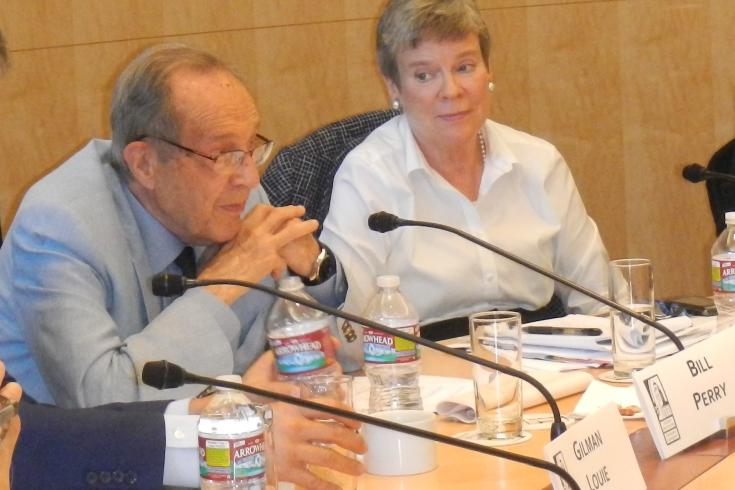CTBT discussed at Stanford University conference
Stanford, California, 17 September 2014
Zerbo was the first speaker at a Hoover Institution conference entitled "The Power to Act: Advancing Nuclear Security to Prevent the Unthinkable" held at Stanford University, California, on 17 September. The round table conference was hosted by former U.S. Secretary of State George Shultz and former U.S. Defense Secretary William Perry, who is also a member of the CTBT Group of Eminent Persons.
Its goal was to brainstorm with about 40 key venture capitalists and executives from information technology companies in Silicon Valley, as well as academics from Stanford and other leading national universities, on ways to apply new technologies to solve a variety of vulnerabilities in nuclear security, nuclear arms control and non-proliferation.

Former U.S. Defence Secretary and member of the CTBT Group of Eminent Persons, William Perry (left) and U.S. Under Secretary of State for Arms Control and International Security, Rose Gottemoeller
In his opening remarks, Perry recalled the "can do spirit of San Francisco" and referenced how technologies, some of which were developed in Silicon Valley, contributed to a slow down and an eventual end of the nuclear arms race. He argued that today technology is an enabling tool, and that Silicon Valley leaders can lead ways to develop and strengthen new and existing tools, including the CTBT, to dispel this fear and ignorance.
We have to use methods that are regarded as credible by the scientific community. As the scientific community moves forward and introduces new methods, new understandings, new systems of measurement, we need to be – if not leading technology – then at least close to the crest of that wave.
The Executive Secretary described the strength of the verification regime in terms of three core elements - trust, credibility and sustainability - all of which depend on technology and innovation: "Trust is maintained though ensuring that all countries have the capacity to use the data to render an opinion on any event."
Getting the CTBT across the finish line is a challenge worthy in the best tradition of big problem solving.
Following Zerbo's remarks, Jay Zucca from Lawrence Livermore National Laboratory moderated a lively discussion on how Silicon Valley leaders can contribute to moving the CTBT into force and support the verification regime’s technological base.
Gottemoeller's address focussed on "Innovation Diplomacy in a Connected World". She argued that innovative tools for public involvement need to be developed and deployed to advance the arms control treaty system, highlighting the power of social media and other information technologies.
25 Sep 2014